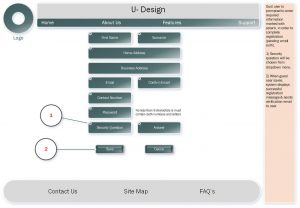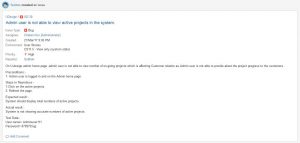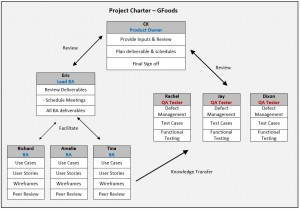Yes, I’m talking to you Project Managers and Business Analysts !
“Change is coming and will impact how business is conducted in ways we are not able to comprehend today”. This is a statement amplified by the Shared Services and Outsourcing Network (SSON)’s 2019 industry survey.
Fact: intelligent automation is the fastest-growing technology with the greatest power for disruption and will replace higher-level cognitive human abilities with a far greater capacity for volume, analysis, accuracy and consistency.
Robotic Process Automation (RPA) is a software-based technology utilising software robots to emulate human execution of a business process. This means that it performs the task on a computer, uses the same interface a human worker would, clicks, types, opens applications, uses keyboard shortcuts, and more.
It is most suitable for rules-driven, data-intensive processes, that are repetitive in nature, e.g. execution of data entry into SAP or other ERP, systems or a full end-to-end business process. In a nutshell, it can help organisations optimize various work-flow processes that can be performed against a set of business rules programmed to start and stop at a specific time.
Right now RPA is having such a significant impact on business strategic objectives and futuristic goals more than any other point in time. The question is why has RPA taken so long to gain the momentum its currently enjoying?
The answer comes as no shocker to me. They say change is the most constant thing in life, but humans have this sometimes-subconscious state of mind whereby we pose a resistance to the simplest of change(s) occurring in and around our surroundings, and the workplace is a primary example of this.
From the Board of Directors being understandably jittery when making key decisions regarding changes to their strategic objectives and goals given that they know each decision could potentially take the business to the next level in terms of its ROI, reputation and market share value, but also send them down under if things happen to go wrong, down to employees worried about how these changes could impact their lives overall i.e. salary and employee benefits, well-being, their specific job roles, hierarchical position at the company, and most importantly; job security.
It is no surprise that the biggest barrier to RPA deployment within organisations thus far has centred around the perceived notion that human jobs will be affected by it. Critics argue that the widespread elimination of jobs will occur and that working environments will be turned on their heads. There is no denying that some jobs will be replaced by RPA, the most likely candidate being people tasked with data entry responsibilities. However, this would be ignoring the wider picture as there are a wide array of job roles that may emerge because of RPA.
Historically, new technology has almost always resulted in the creation of more jobs, and the widespread incorporation of RPA will be no different. For example, RPA engineering and RPA developers are roles that wouldn’t exist without the technology. It won’t just create new jobs, it also has the ability to enhance current jobs, by providing human workers with the necessary robotic process automation tools to focus on high-value tasks. One of the major draws of RPA is that it enables automatable work, relieving human workers from repetitive clerical processes such as data entry and data manipulation, allowing human workers to focus on complex value-adding tasks that elevate a business.
Also, it aids the reduction in human error and costs. Foibles to which human workers are prone, particularly during long repetitive tasks caused by tiredness and boredom are completely mitigated with RPA. This results in work that is more accurate, timely and consistent, ensuring that time and money isn’t lost correcting old work or creating duplicates. It is important to also highlight that it is easy to configure so developers do not need programming skills. RPA interfaces work much like Visio, by dragging, dropping and linking icons that represent steps in a process. Code is generated automatically behind the scenes.
Furthermore, one of the most significant benefits of RPA is that the software is non-invasive as it sits on top of existing systems without the need to create, replace, or further develop other platforms. RPA software accesses other computer systems through user interfaces with a login ID and password (like a human) and through the presentation layer, so no underlying systems programming logic is touched.
Recently, I was having an interesting conversation about RPA with a very good friend of mine, an expert in Civil Engineering who works with one of the world’s leading firms in infrastructural design and development, with regards to the prospects of RPA and the potential impacts on busines strategies going forward. He gave a candid insight on the topic during this fantastic lengthy discussion. He laid emphasis regarding the uncertainties surrounding businesses and how key decisions are currently been driven by fast-paced innovative technological developments on a global scale, as well as the need for organisations to stay competitive.Thus, business decisions such as fully embracing intelligent automation although may lead to cutting off some human resources, the underlying fact is that it may be the most suitable approach in achieving business goals going forward in terms of being cost-efficient and maintaining a steady ROI.
Estimates vary, but employees can spend anywhere from 25-45% of their time on manual activities that could be automated. Entrenched “bad” practices are a common culprit along with insufficient process discipline. One solution to these “processing” ills can certainly be the application of RPA, which follows rules, is standardized and does not make mistakes. Identifying the right process, however, is the single most important step in ensuring a successful RPA implementation. (SSON’s 2019 industry report confirms “wrong process selection” as the leading cause of RPA project failure.)
The ideal candidate process for RPA is rules-based (thus easily encoded), repetitive, manual, routine, and involves steps with easy identification of exceptions. In addition, the data should be structured (i.e., easily accessible and consistently formatted). In identifying optimal candidates for RPA, look for where rigid applications don’t integrate with systems, creating blockages. The wins here are about capturing the low hanging fruit to demonstrate the validity of the solution, drive results, and build internal experience and competencies.
A common mistake is to choose a process that causes the greatest headaches. This is often a highly complex, multi-step process where automation, it is believed, will simply make the problem go away. This rarely works as the complexity of the process frequently prevents building a more fully automated solution in a timely manner. This approach can quickly get bogged down, giving RPA a bad name and resulting in perceived “failure” that could have been avoided with more strategic foresight in evaluating the process.
In summary, thinking back to the GDPR storm 3 years ago that swept all of Europe. A lot of IT Professionals (i.e Business Analysts and Project Managers) were not well-prepared both skill and knowledge wise, to take on the enormous amount of GDPR projects that became suddenly available. As a result, they eventually missed out on sizable pay packages and huge job opportunities.
Also significant is the fact that the recent victory of the British Prime Minister Boris Johnson with his Brexit deal in the House of Parliament ensures that the UK will leave the European Union come the 31st of January 2020, and negotiations currently slated to be concluded by the 31st of December 2020 according to the Article 50 agreements, will play a massive role in influencing business strategies going forward, and simply points to the fact that businesses may well be entering an era of financial perplexity.
Hence, as Business Analysts or Project Managers the question we should be asking ourselves at the moment is, do we wait for the wave to sweep us away unprepared like the GDPR storm took us by surprise, or do we embrace RPA and start preparing and equipping ourselves in this ever-changing digital world?
If you are interested in learning more about our RPA training please click here
Article by Tammy T Futuretrend’s RPA course consultant see his bio here
Images from Freepik (www.freepik.com)





